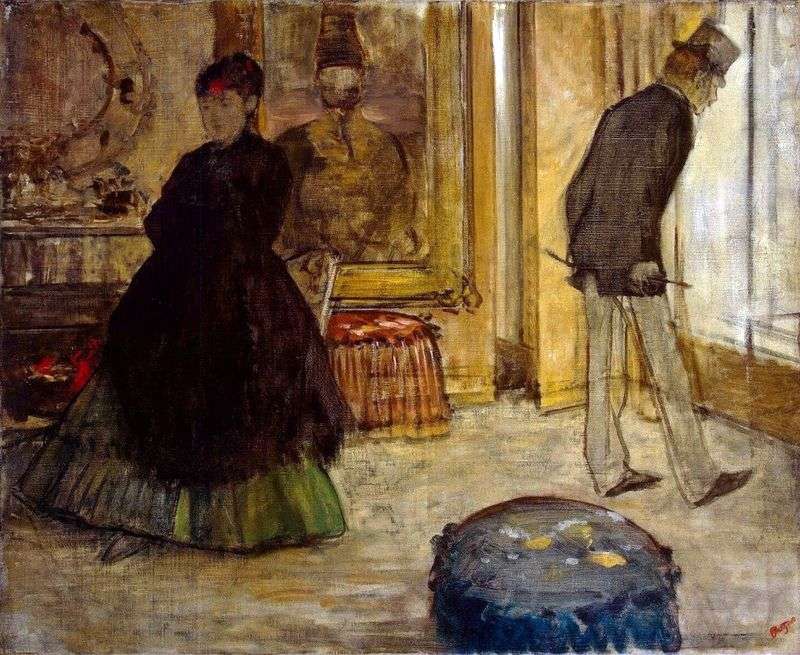
On closer examination of the picture, Burns’ idea of a hat workshop disappears, not only because no hats or boxes for them are visible anywhere. It’s probably the boudoir of a rich house. To the left is a fireplace with a surprisingly simple and therefore superbly written fire. Above the fireplace, a fashionable oval mirror in the second half of the 1860’s. It is not at all the kind that was used by modists.
Between a man and a woman is not a mirror, as those who were forced to judge by mediocre photos, and a large portrait in a massive gilded frame, believed. His presence, of course, is not accidental, but the decoding does not lend itself. The character of the portrait in a strangely high headdress is mysterious. The interior element, like the door next to the window, ajar in a narrow corridor, can not be explained. Such details are not necessary for creating a portrait, but can make sense if the picture contains a plot.
The composition solution of the “Interior with two figures” is very laconic. The darkest spots of the picture – the cloak of the lady and the coat of Monsieur – immediately attract attention to the characters. Costumes are unusual for the interior. A man in a top hat, with a stack of a woman in a cape – couple dressed for a walk either, or for some visit, but for some reason they are slow. Apparently, as a result of sudden explanation painful pause occurs, forcing congeal turned away from each other spouses. And the fact that the scene takes place in the boudoir, gives it a more dramatic and psychologically more complex character.
It is likely that the details of the interior are filled with meaning in connection with the plot of the quarrel: the fire is an attribute of female passion, the empty window where the man is staring – an easily read sign of his indifference. At the same time, it was the man’s figure that brought the artist much trouble. It can be seen that at this point the painting was subjected to significant processing: the paint was scraped off and applied again. The picture does not seem to be finished, but Degas’s signature indicates that he was not going to add anything to what he had already said.
The hidden collision of the “Interior” is probably related to the artist’s perception of the problems of sex. His attitude towards women was far from simple, often caustic and arrogant. At the same time, we can not consider him a misogynist. He liked women’s societies, but for some reason, physiological or psychological, in all relationships with women, he did not cross the line, which is followed by a deeper rapprochement, and remained a bachelor for life. By the time both “genre paintings” were written, Degas, according to the ideas of the time, was no longer young.
Probably, age made him more than before, to think about the problems of sex. In the absence of any romantic illusions, the two main aspects of the relationship between the two sexes, marriage and adultery, clearly caused him too many “buts.” In the “Interior” they are treated quite negatively: almost with a grin in one case and with obvious bitterness – in another. And here and there the characters do not communicate and are divorced on the sides. Their isolation – a sign of obvious alienation, then habitually ordinary, and then dramatic.
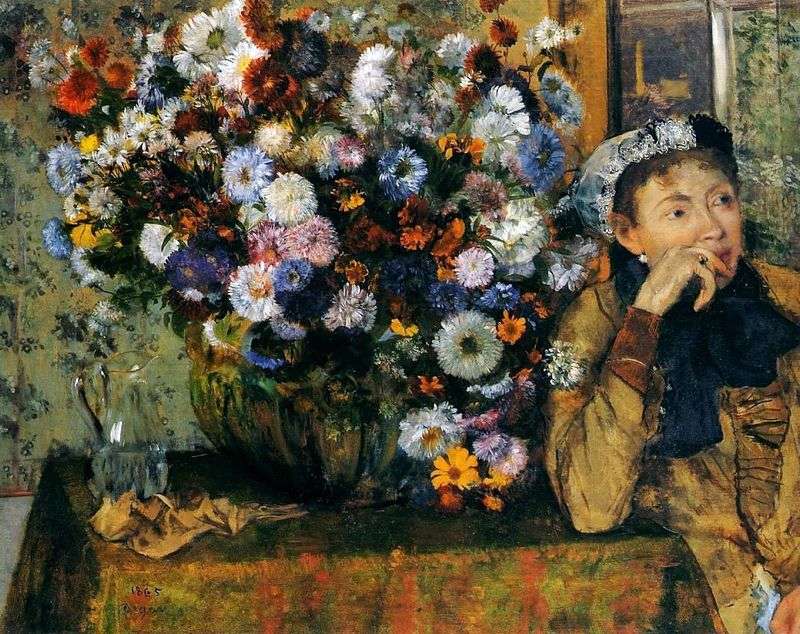 A woman sitting by a vase of flowers by Edgar Degas
A woman sitting by a vase of flowers by Edgar Degas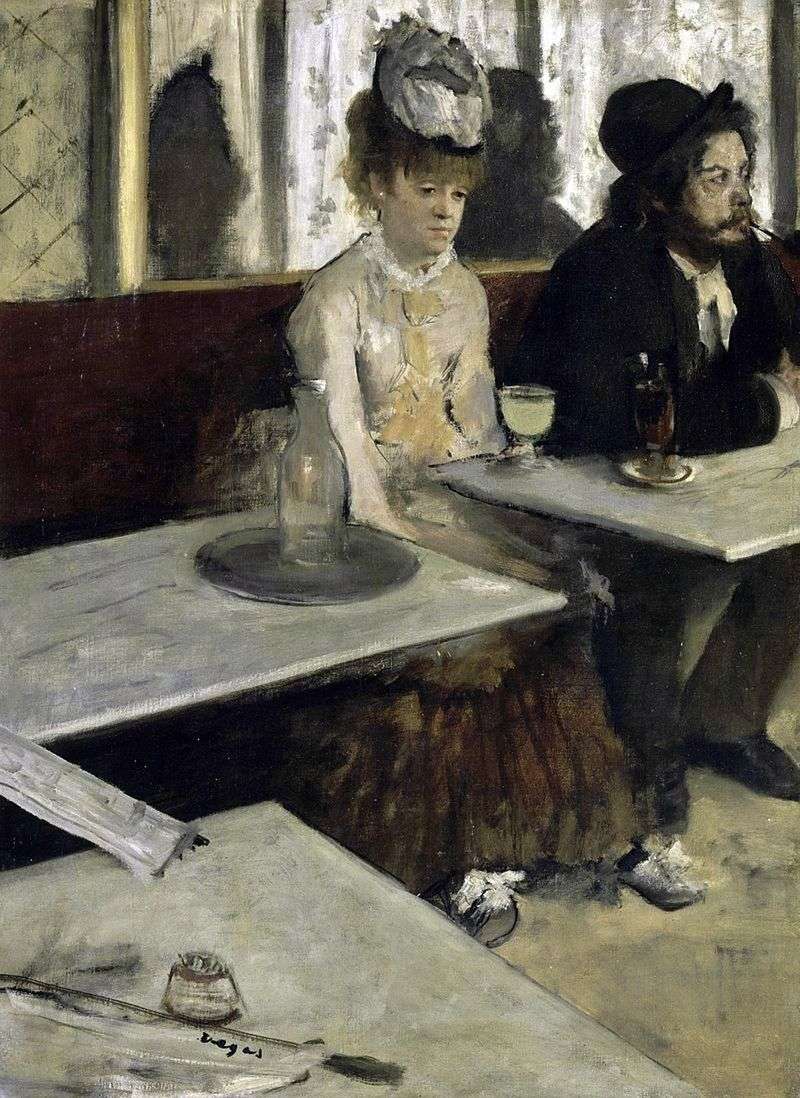 Lover of absinthe (People in the cafe) by Edgar Degas
Lover of absinthe (People in the cafe) by Edgar Degas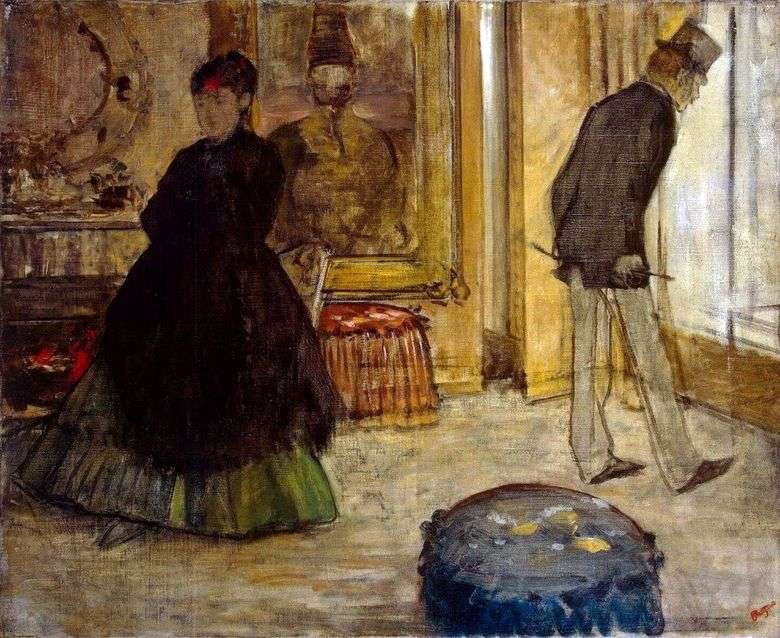 Interior con dos figuras – Edgar Degas
Interior con dos figuras – Edgar Degas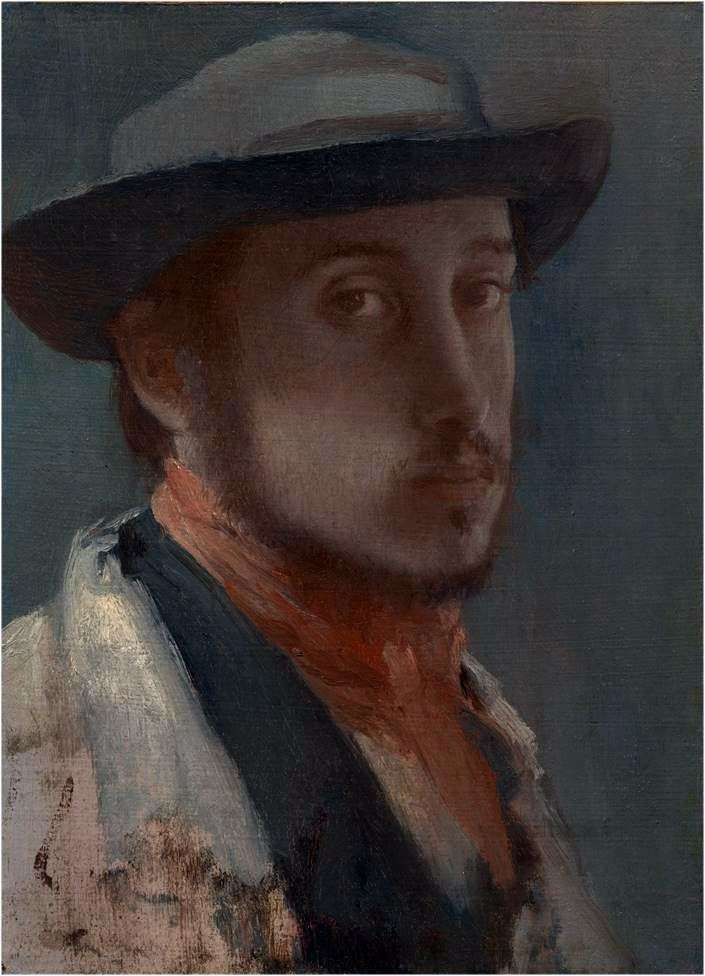 Self-portrait in a soft hat by Edgar Degas
Self-portrait in a soft hat by Edgar Degas Abduction by Edgar Degas
Abduction by Edgar Degas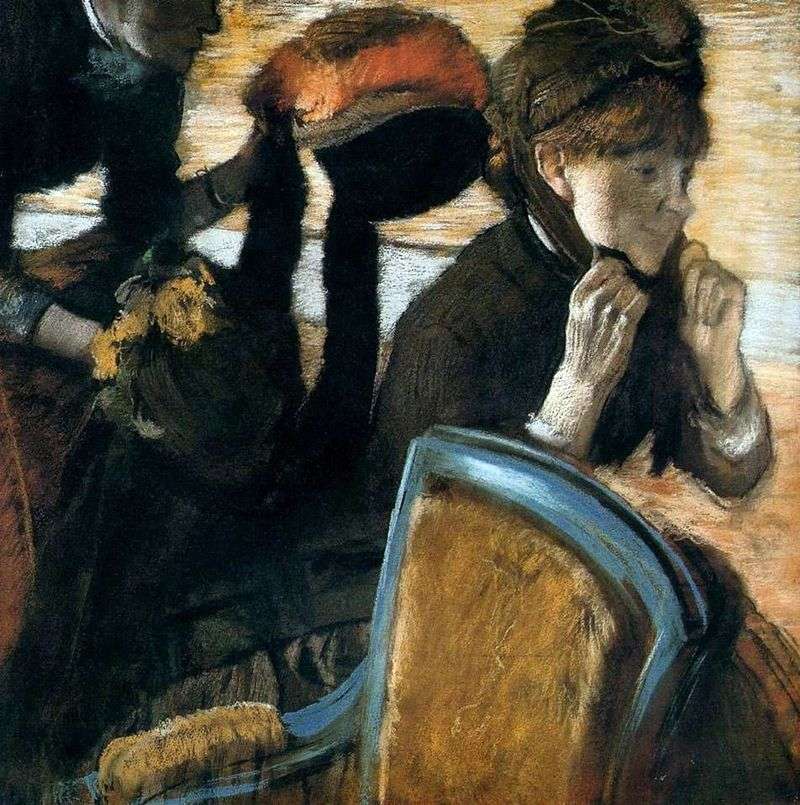 The milliner by Edgar Degas
The milliner by Edgar Degas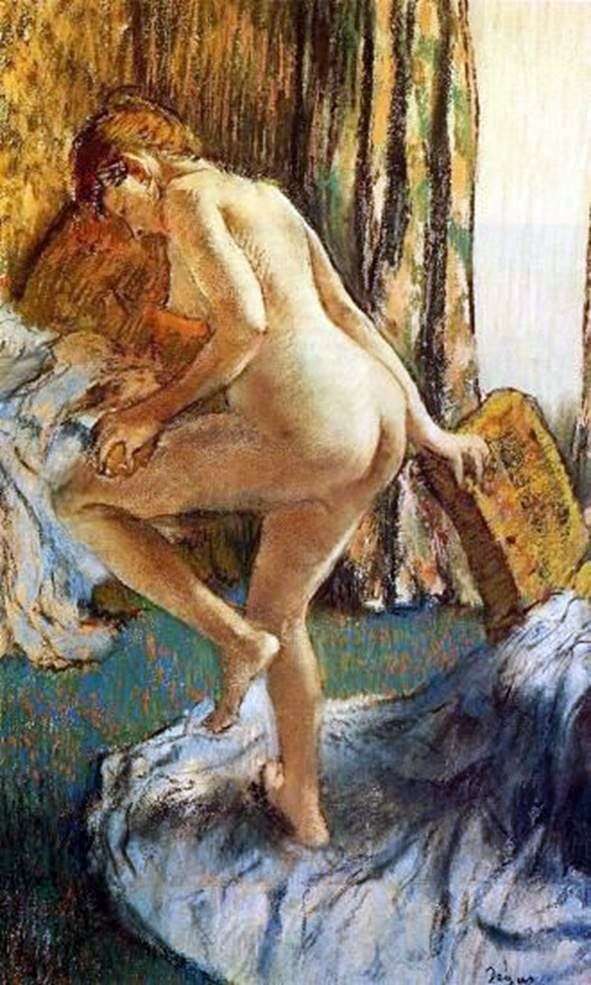 After bathing by Edgar Degas
After bathing by Edgar Degas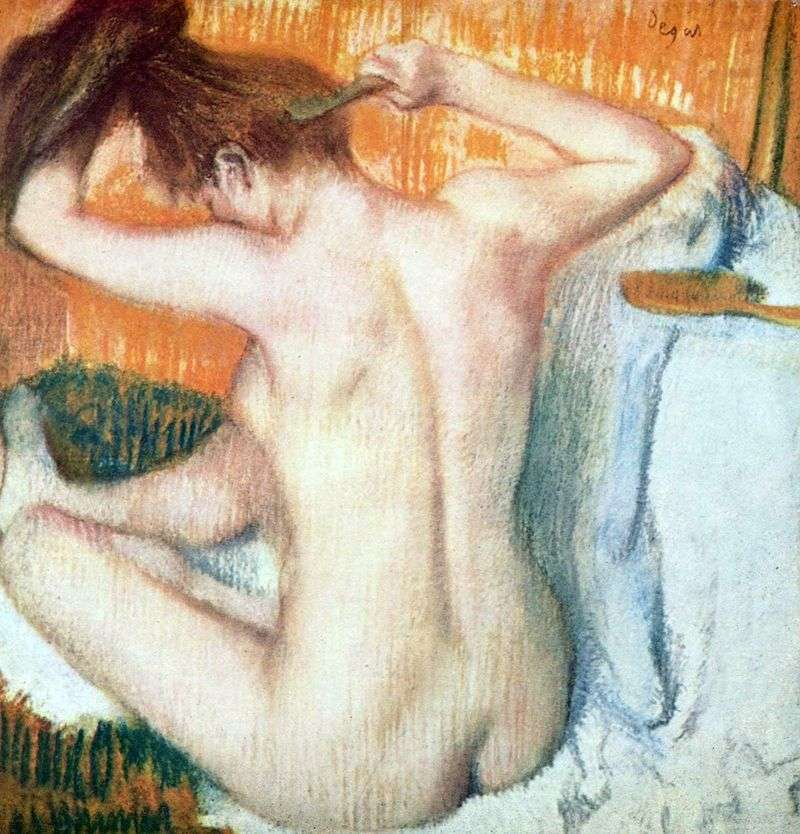 Woman at the toilet by Edgar Degas
Woman at the toilet by Edgar Degas